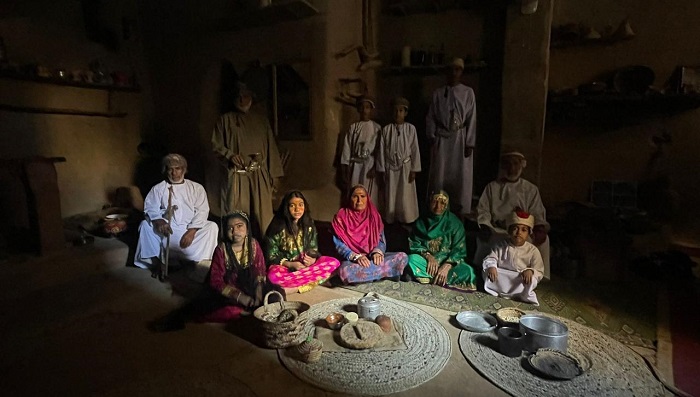Bait Al Safah, a historical house in Al Hamra, Al Dakhiliyah Governorate, is a glimpse into Oman’s past, built around 1655 AD. The house served as a gathering place for scientific and religious activities, as well as an administrative headquarters. Its unique location near Al Salaf Mosque and surrounded by orchards and palm trees adds to its charm. The house is a marvel of Omani architecture, made from mud mixed with straw and mortar, with a wooden door that has stood for over 400 years. Bait Al Safah’s historical significance lies in centuries of cultural, scientific, and intellectual activities that have helped shape Oman’s history and heritage.
Having undergone restoration, Bait Al Safah has been transformed into a living museum, attracting tourists who want to experience Omani customs, traditions, and crafts. The house offers visitors a chance to explore various rooms, learn traditional crafts such as spinning, weaving, and pottery, and appreciate the architectural details that have stood the test of time. It provides a window into the lives of Oman’s people in the past, preserving and showcasing the country’s rich heritage and the ingenuity of its people. By sharing such treasures, Oman continues to inspire and educate future generations.
The historical significance of Bait Al Safah lies in its role as a gathering place for scientific and religious activities, as well as an administrative headquarters. Its unique location near Al Salaf Mosque and surrounded by orchards, palm trees, and a falaj adds to its charm. The architectural marvel of the house is evident in its construction from mud mixed with straw and mortar, with a wooden door that has stood for over 400 years. Bait Al Safah has been restored to preserve its original features and transform it into a living museum, attracting tourists to experience Omani customs, traditions, and crafts.
Bait Al Safah offers visitors a valuable insight into the lives of Oman’s people in the past, allowing them to explore various rooms, learn traditional crafts, and appreciate architectural details. It serves as a reminder of Oman’s rich heritage and the ingenuity of its people, preserving and showcasing treasures that continue to inspire and educate future generations. The house plays a vital role in shaping Oman’s history and heritage through centuries of cultural, scientific, and intellectual activities.
Preserving Bait Al Safah as a living museum allows tourists to experience Omani customs, traditions, and crafts firsthand, while also appreciating the architecture and history of the house. Visitors can explore the various rooms, learn traditional crafts like spinning, weaving, and pottery, and immerse themselves in Oman’s rich heritage. By sharing such treasures, Oman continues to inspire and educate future generations about its history and the ingenuity of its people. Bait Al Safah stands as a testament to Oman’s past and a valuable resource for understanding its culture and traditions.











